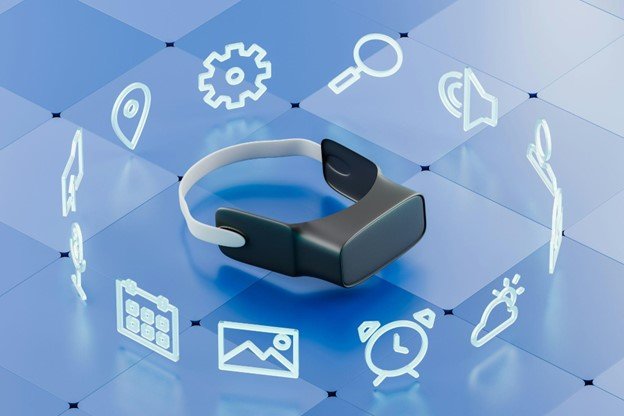Explained convenience, security and efficiency


Imagine a world in which our houses anticipate our needs, simplify our routines and even save us money. This is not a science fiction -it is the reality smart home gadgets. From voice -activated assistants to automated thermostats, these devices change our living and make our rooms more efficient, safer and more convenient.
In the course of technology, we see a growing number of innovative tools that are supposed to improve our daily life. Regardless of whether it is lights with a smartphone or in real-time security warnings, intelligent devices become an essential part of modern life.
How exactly do these devices improve our daily life? Let us examine how the Smart Home technology makes life easier, safer and more connected.
The rise of smart -home technology
Smart -Home technology has grown exponentially in the past ten years, which is due to progress in terms of connectivity and automation. These innovations integrate seamlessly into our houses and make daily tasks more efficient and more personalized. Devices such as motion sensors, intelligent lighting systems and intelligent devices have developed to ensure convenience and to improve energy management. This shift marks a significant transformation in the way we interact with our living rooms.
The increasing availability of smart home devices made it more accessible to a wide audience. Market data show that over 258 million households have taken at least one intelligent device worldwide by 2023. Products such as door bell cameras, automated blinds and voice -activated hubs are aimed at various needs, which reinforces their widespread attractiveness. The infrared technology frequently contained in these devices enables precise control in various applications, including temperature adjustments and entertainment systems.
Safe connectivity plays an important role in this development. With the advent of cloud-based systems and encrypted communication channels, smart homes are based on functionality with robust safety measures. This ensures that users can manage home operations from a distance without affecting privacy via smartphones. Since the compatibility between devices improves, the integration of several devices into a cohesive ecosystem has become easier and signals a future in which intelligent houses are standard and not complementary.
Important advantages of Smart -Home devices
Smart -Home devices improve our daily life by offering comfort, optimizing energy consumption and improving safety at home. Integrated systems such as automated lighting and sensors give routine tasks.
Comfort and automation
Smart Home gadgets rationalize the daily routines through advanced automation. Devices such as voice-activated assistants and programmable thermostats enable us to control the home settings freely. Automated systems such as intelligent lights and motorized blinds occur in response to user preferences or external conditions. For example, trigger movement sensors when entering a room lights, which reduces manual efforts. Connected devices create a uniform ecosystem that enables seamless management via apps or intelligent hubs.
Energy efficiency
Energy -efficient intelligent devices help to reduce energy consumption. Devices such as smart thermostats learn user plans and minimize heating or cooling if they are not needed. LED -Smart lighting systems adapt the brightness based on natural light values and save energy. Connected devices such as smart washing machines optimize electricity consumption during the hours outside the peak times. Infrarot technologies in heating systems ensure precise temperature control for further energy savings. The energy consumption data provided by these systems help users make well -founded decisions.
Improved security
Smart gadgets increase security home through real -time monitoring and warnings. Devices such as Smart Doorbell cameras offer live video feeds and notify us when the movement is recognized on the door. Intelligent locks offer a remote access control and enable keyless entry and temporary access for guests. Security sensors recognize burglary attempts or unusual activities and immediately send warnings to our devices. Encrypted connections protect data, which ensures privacy and at the same time improves protection.
Popular Smart Home devices that change daily life


Smart Home devices redefine convenience and efficiency. By combating certain budget needs, these devices make daily routines easier and more innovative. Accordingly StatesmanThe global Smart Home market is expected to surpass 200 billion dollars by 2028, which proves how quickly this trend shapes the future.
Smart speaker and voice assistant
Intelligent speakers with voice assistants such as Amazon Echo and Google Nest improve our lives by offering free -handed control over connected devices. These devices enable tasks such as planning dates, music games and management of home automation with simple voice commands. Language assistants seamlessly integrate into compatible products to ensure effortless operation in various systems. Intelligent speakers also provide real-time updates such as weather forecasts or traffic warnings that simplify decision-making. Your ability to recognize individual voices ensures personalized answers and is aimed at several users in one household.
Smart thermostats
Smart thermostats such as Nest Learning and Ecobee improve energy efficiency by adapting to user habits and preferences. These devices monitor the daily routines to create automated temperature plans, which reduces the unnecessary energy consumption. Many models use sensors, including infrared, to identify occupancy and adapt settings for increased savings. Users can control intelligent thermostats from afar via mobile apps and also enable adjustments in the absence of home. By integrating with weather forecasts, these devices can optimize the heating or cooling based on the conditions outdoors and at the same time minimize the costs.
Smart Lighting Systems
Intelligent lighting systems such as Philips Hue and Lifx offer advanced control over the lighting. With these systems, users can adapt the brightness, set timeters and adapt colors via smartphone apps or voice commands. Movement sensors often accompany intelligent lights to ensure that they only activate and save energy if necessary. Some lights contain infrared sensors for improved functionality, such as automatic dimming in response to space assignment. These systems improve the ambience and offer practical advantages, e.g. B. the adaptation of the light temperature to support natural sleep cycles or increase safety by simulating the assignment in the absence.
Intelligent surveillance cameras and door rings
Intelligent surveillance cameras and video doorbells, including ring and arlo devices, improve the security of home through real-time monitoring and warnings. These devices offer high-resolution video feeds that can be accessed via apps so that users can monitor their property from anywhere. Features such as motion detection and night vision infrared ensure thorough surveillance even in poor lighting conditions. Two-way audio in many models enables communication with visitors or deterring intruders from afar. Cloud-based storage options ensure accessible recording without additional hardware, which increases the convenience and safety for modern households.
Challenges and considerations
While Smart -Home devices offer unmatched comfort, they are associated with challenges that require attention. Data protection, security, costs and accessibility are important concerns for users who use this technology.
Data protection and security risks
Smart -Home devices rely on connected networks to work efficiently. However, this can suspend sensitive data for cyber security threats. Hackers can take advantage of weaknesses in devices such as cameras or voice assistants to access personal information. The risks increase if devices have no robust encryption or firmware updates.
The non -authorized access is another problem, especially for devices that use weak standard registration information. In order to protect the privacy of the user, networks with strong passwords must be secured, the software is often updated and the authentication of two factors is used. Devices that use extended technologies such as infrared sensors for automation must comply with strict standards for data security in order to maintain trust. The guarantee of data protection and encryption protocols is of essential importance for a safer Smart Home experience.
Costs and accessibility
Smart Home devices often have high initial costs and limit some households. Popular devices such as intelligent thermostats or advanced security systems can be between 100 and 500 US dollars or more. In addition, the maintenance and update of these devices adds ongoing costs.
Connectivity problems in rural or sub -provision affects acceptance. Reliable internet access is of crucial importance for most devices, which means that they are less practical at locations with limited infrastructure. Manufacturers should prioritize affordability and design solutions that are adaptable to different network conditions. While the prices are falling when the technologies are progressing, cost-effective options have to expand further to achieve the brank bridge gaps.